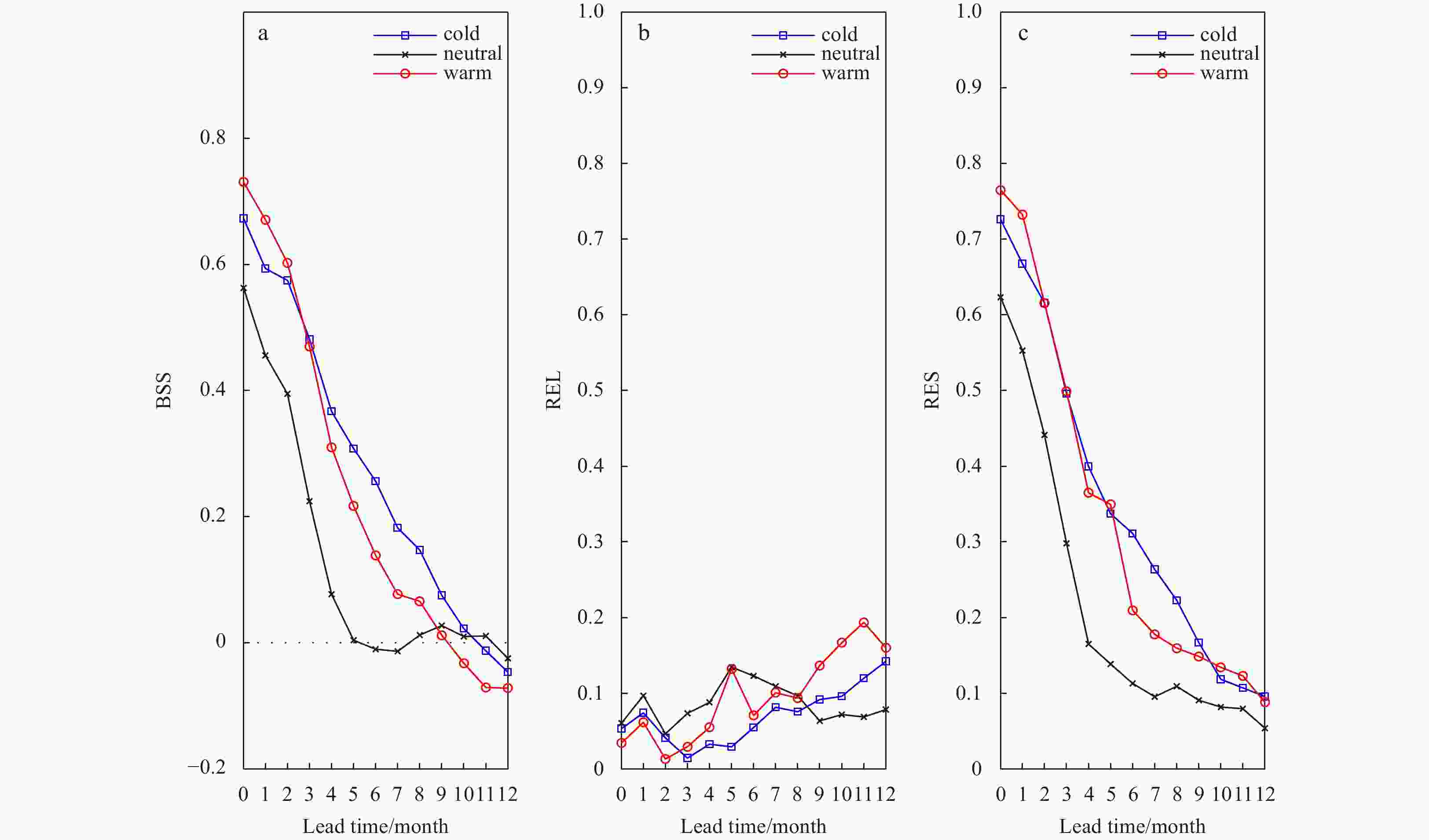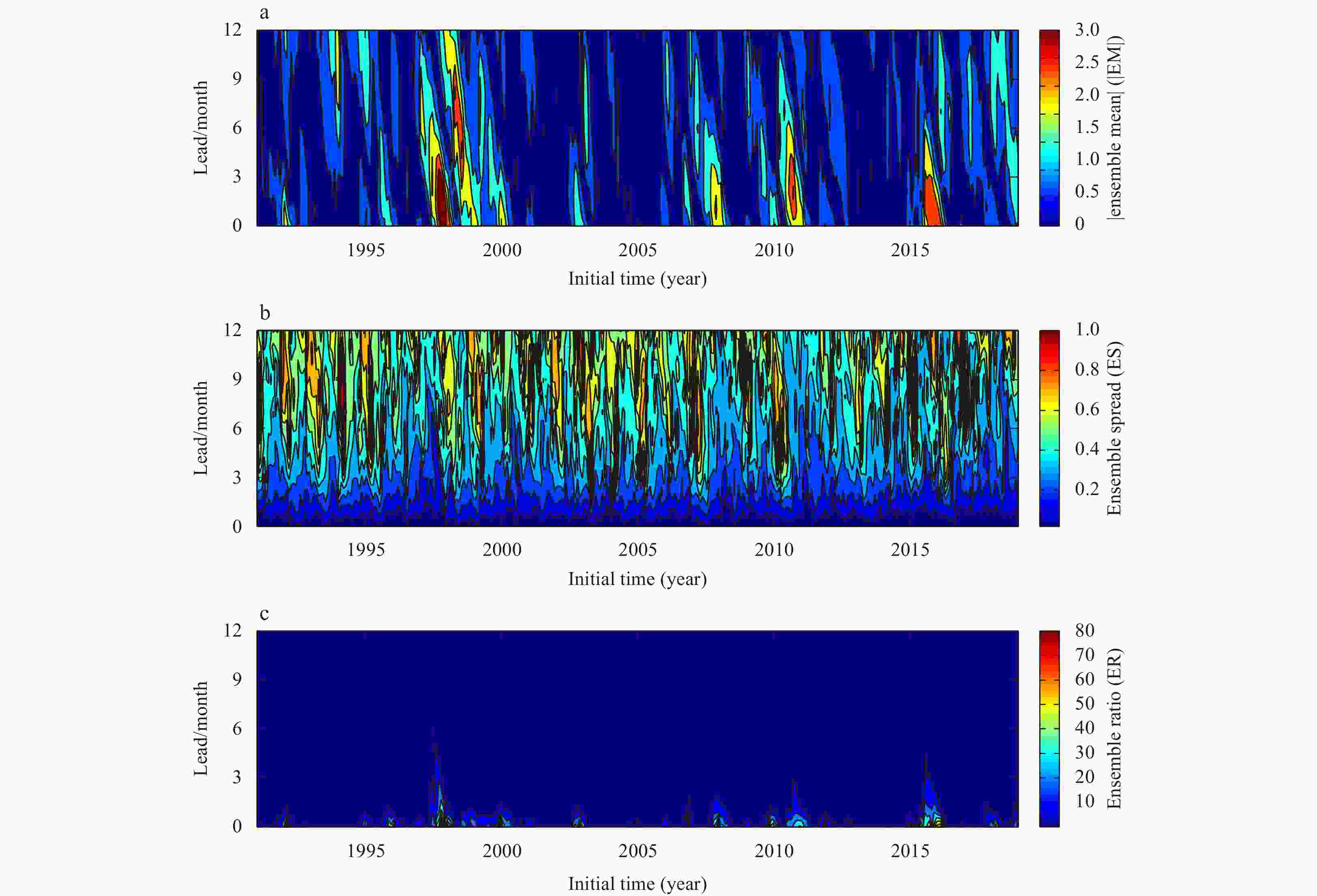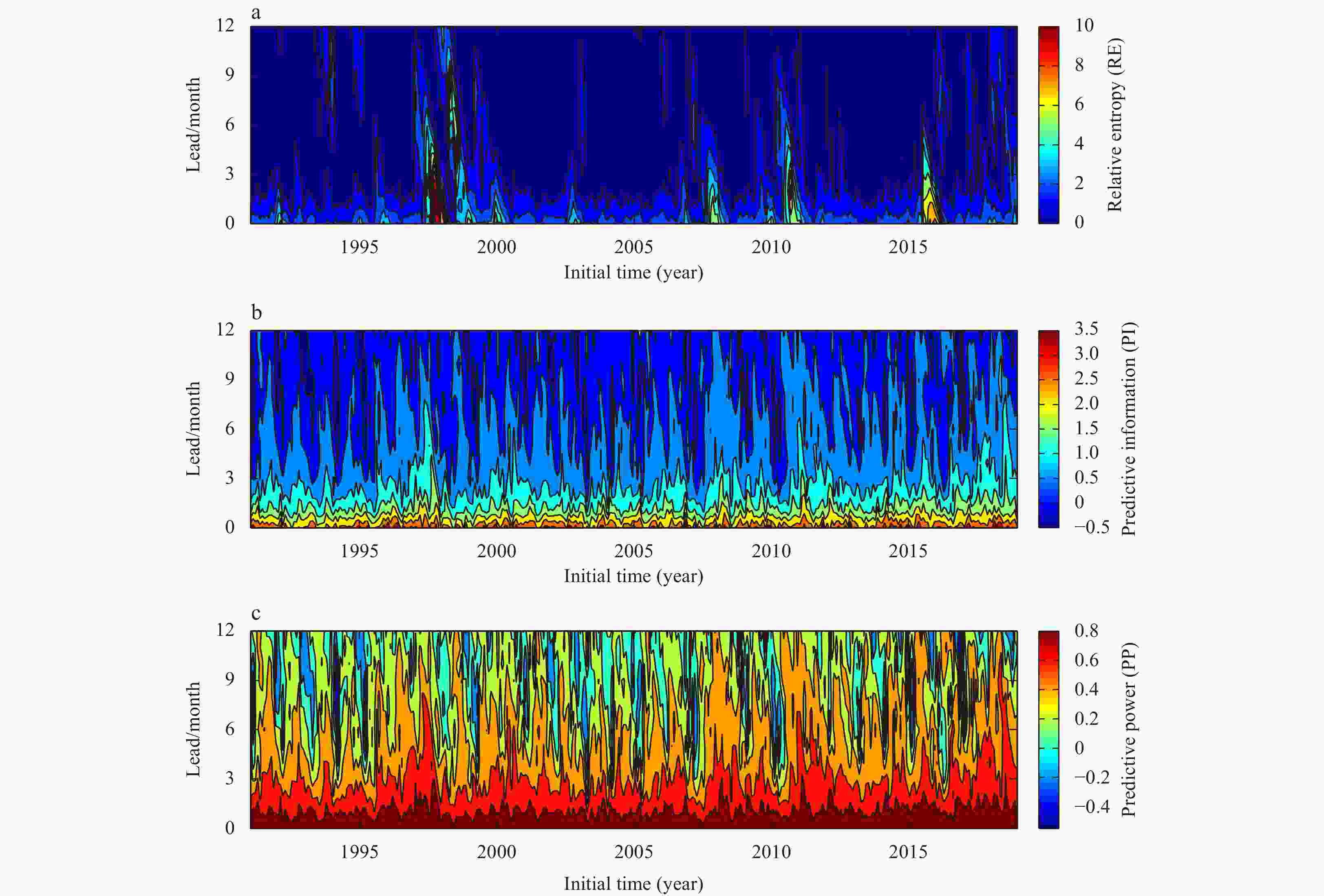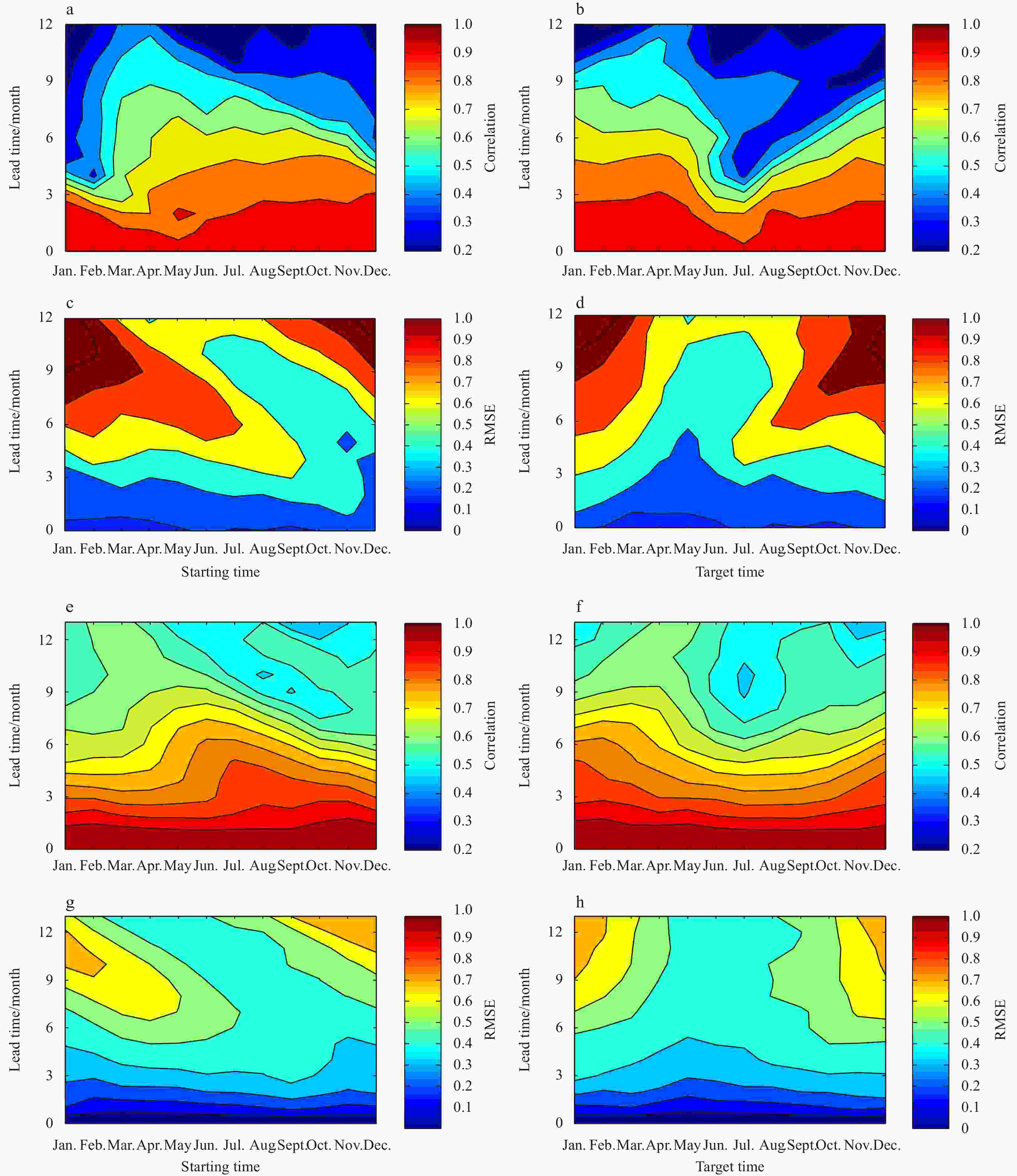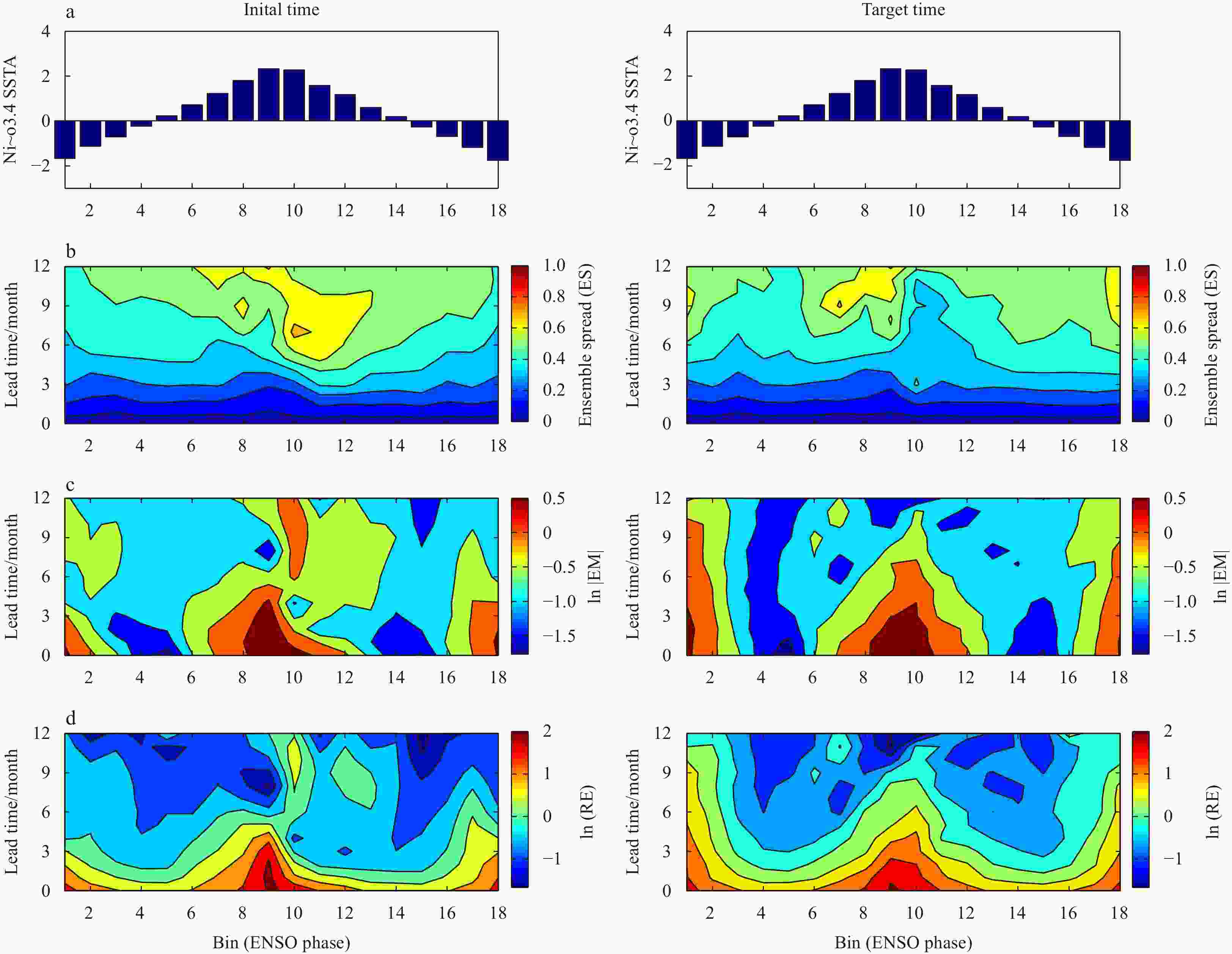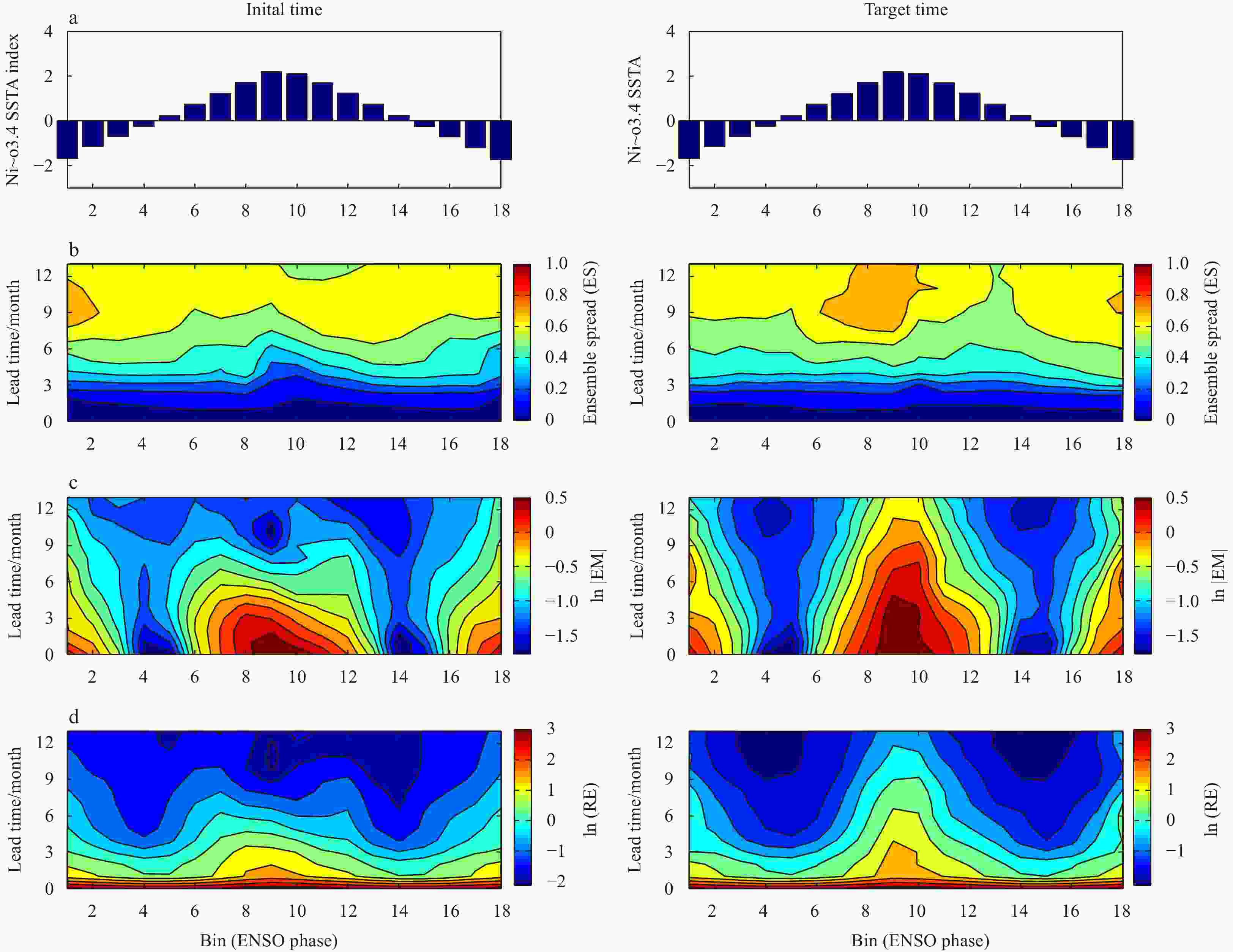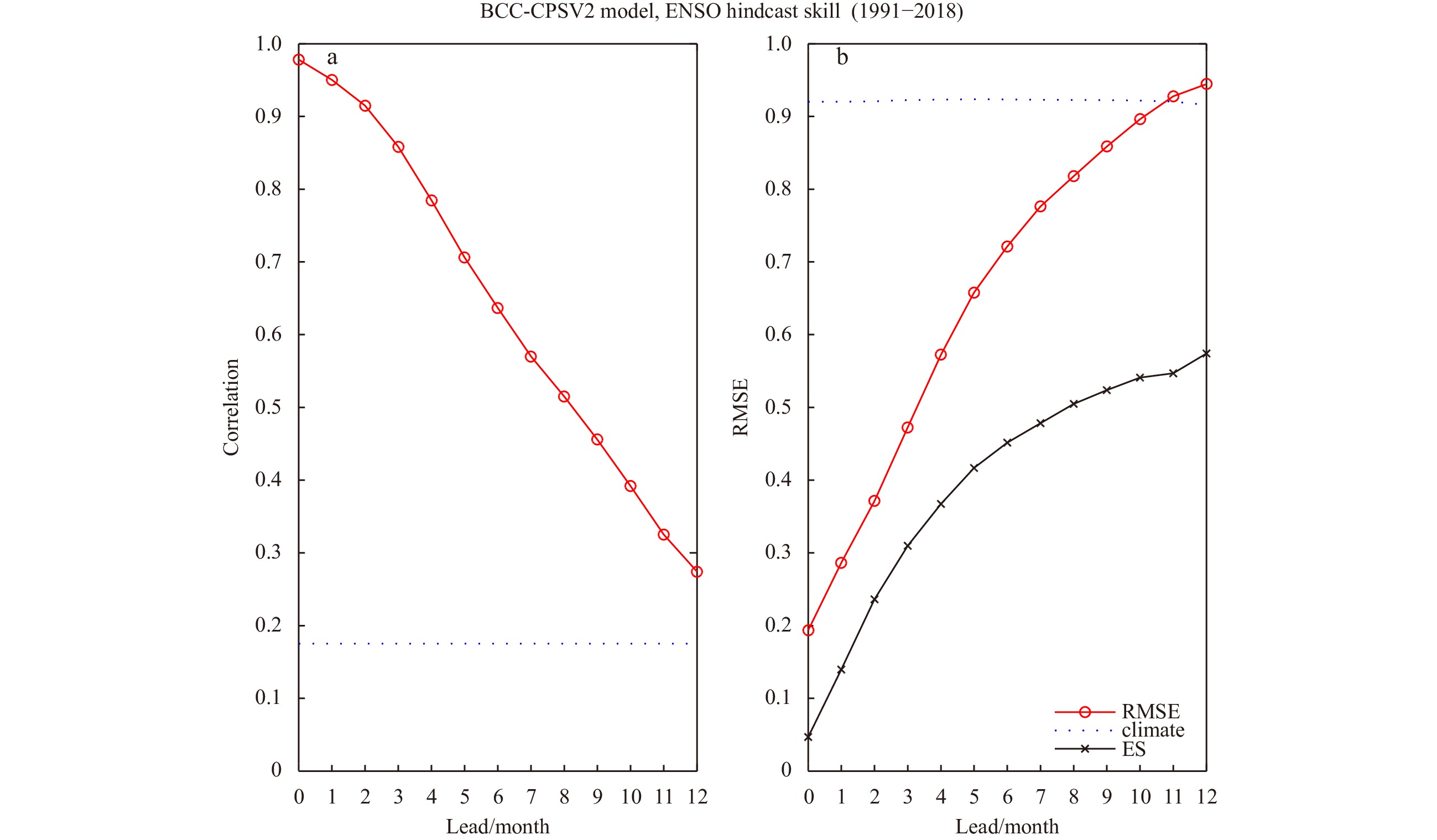Investigating the ENSO prediction skills of the Beijing Climate Center climate prediction system version 2
-
Abstract: The El Niño-Southern Oscillation (ENSO) ensemble prediction skills of the Beijing Climate Center (BCC) climate prediction system version 2 (BCC-CPS2) are examined for the period from 1991 to 2018. The upper-limit ENSO predictability of this system is quantified by measuring its “potential” predictability using information-based metrics, whereas the actual prediction skill is evaluated using deterministic and probabilistic skill measures. Results show that: (1) In general, the current operational BCC model achieves an effective 10-month lead predictability for ENSO. Moreover, prediction skills are up to 10–11 months for the warm and cold ENSO phases, while the normal phase has a prediction skill of just 6 months. (2) Similar to previous results of the intermediate coupled models, the relative entropy (RE) with a dominating ENSO signal component can more effectively quantify correlation-based prediction skills compared to the predictive information (PI) and the predictive power (PP). (3) An evaluation of the signal-dependent feature of the prediction skill scores suggests the relationship between the “Spring predictability barrier (SPB)” of ENSO prediction and the weak ENSO signal phase during boreal spring and early summer.
-
Figure 5. Seasonal dependent characteristics of prediction skill in the BCC-CPS2 model. Actual prediction skill: Correlation and RMSE (upper two panels, a−d) as a function of starting time vs lead time (left) or target time vs lead time (right). As comparisons, the seasonal variations of the correlation and the RMSE for the Zebiak-Cane (ZC) model ensemble hindcasts are given in the lower two panels (e−h).
-
[1] Cheng Yanjie, Tang Youmin, Chen Dake. 2011. Relationship between predictability and forecast skill of ENSO on various time scales. Journal of Geophysical Research: Oceans, 116(C12): C12006. doi: 10.1029/2011JC007249 [2] Cheng Yanjie, Tang Youmin, Jackson P, et al. 2010. Ensemble construction and verification of the probabilistic ENSO prediction in the LDEO5 model. Journal of Climate, 23(20): 5476–5497. doi: 10.1175/2010JCLI3453.1 [3] DelSole T. 2004. Predictability and information theory: part I. Measures of predictability. Journal of Atmospheric Sciences, 61(20): 2425–2440. doi: 10.1175/1520-0469(2004)061<2425:PAITPI>2.0.CO;2 [4] DelSole T, Tippett M K. 2007. Predictability: Recent insights from information theory. Reviews of Geophysics, 45: RG4002. doi: 10.1029/2006RG000202 [5] Griffies S M, Gnanadesikan A, Dixon K W, et al. 2005. Formulation of an ocean model for global climate simulations. Ocean Science, 1: 45–79. doi: 10.5194/os-1-45-2005 [6] Hoffman R N, Kalnay E. 1983. Lagged average forecasting, an alternative to Monte Carlo forecasting. Tellus A, 35(2): 100–118. doi: 10.3402/tellusa.v35i2.11425 [7] Hu Z Z, Kumar A, Zhu J S, et al. 2019. On the challenge for ENSO cycle prediction: An example from NCEP Climate Forecast System, version 2. Journal of Climate, 32(1): 183–194. doi: 10.1175/JCLI-D-18-0285.1 [8] Jin E K, Kinter J L III, Wang B, et al. 2008. Current status of ENSO prediction skill in coupled ocean–atmosphere models. Climate Dynamics, 31(6): 647–664. doi: 10.1007/s00382-008-0397-3 [9] Kleeman R. 2002. Measuring dynamical prediction utility using relative entropy. Journal of the Atmospheric Sciences, 59(13): 2057–2072. doi: 10.1175/1520-0469(2002)059<2057:MDPUUR>2.0.CO;2 [10] Kleeman R, Tang Y M, Moore A M. 2003. The calculation of climatically relevant singular vectors in the presence of weather noise as applied to the ENSO problem. Journal of the Atmospheric Sciences, 60(23): 2856–2868. doi: 10.1175/1520-0469(2003)060<2856:TCOCRS>2.0.CO;2 [11] Kumar A, Hu Z Z. 2014. How variable is the uncertainty in ENSO sea surface temperature prediction?. Journal of Climate, 27(7): 2779–2788. doi: 10.1175/JCLI-D-13-00576.1 [12] Kumar A, Hu Z Z, Jha B, et al. 2017. Estimating ENSO predictability based on multi-model hindcasts. Climate Dynamics, 48(1–2): 39–51. doi: 10.1007/s00382-016-3060-4 [13] Latif M, Barnett T P, Cane M A, et al. 1994. A review of ENSO prediction studies. Climate Dynamics, 9(4): 167–179 [14] McPhaden M J. 2003. Tropical Pacific Ocean heat content variations and ENSO persistence barriers. Geophysical Research Letters, 30(9): 1480. doi: 10.1029/2003GL016872 [15] Ren Hongli, Jin F F, Song L C, et al. 2017. Prediction of primary climate variability modes at the Beijing Climate Center. Journal of Meteorological Research, 31(1): 204–223. doi: 10.1007/s13351-017-6097-3 [16] Ren Hongli, Scaife A A, Dunstone N, et al. 2019. Seasonal predictability of winter ENSO types in operational dynamical model predictions. Climate Dynamics, 52(7–8): 3869–3890. doi: 10.1007/s00382-018-4366-1 [17] Ren Hongli, Zheng Fei, Luo Jingjia, et al. 2020. A review of research on tropical air-sea interaction, ENSO dynamics, and ENSO prediction in China. Journal of Meteorological Research, 34(1): 43–62. doi: 10.1007/s13351-020-9155-1 [18] Sohn S J, Tam C Y, Jeong H I. 2016. How do the strength and type of ENSO affect SST predictability in coupled models. Scientific Reports, 6(1): 33790. doi: 10.1038/srep33790 [19] Tang Y M, Kleeman R, Moore A M. 2005. Reliability of ENSO dynamical predictions. Journal of the Atmospheric Sciences, 62(6): 1770–1791. doi: 10.1175/JAS3445.1 [20] Tang Y M, Kleeman R, Miller S. 2006. ENSO predictability of a fully coupled GCM model using singular vector analysis. Journal of Climate, 19(14): 3361–3377. doi: 10.1175/JCLI3771.1 [21] Tang Y M, Lin H, Moore A M. 2008. Measuring the potential predictability of ensemble climate predictions. Journal of Geophysical Research, 113(D4): D04108. doi: 10.1029/2007JD008804 [22] Tang Youmin, Zhang Ronghua, Liu Ting, et al. 2018. Progress in ENSO prediction and predictability study. National Science Review, 5(6): 826–839. doi: 10.1093/nsr/nwy105 [23] Tian Ben, Ren Hongli, Jin Feifei, et al. 2019. Diagnosing the representation and causes of the ENSO persistence barrier in CMIP5 simulations. Climate Dynamics, 53(3): 2147–2160 [24] Wilks D S. 2006. Statistical Methods in the Atmospheric Sciences. 2nd ed. New York: Academic Press, 284–292 [25] Winton M. 2000. A reformulated three-layer sea ice model. Journal of Atmospheric and Oceanic Technology, 17(4): 525–531. doi: 10.1175/1520-0426(2000)017<0525:ARTLSI>2.0.CO;2 [26] Wu Tongwen, Song Lianchun, Li Weiping, et al. 2014. An overview of BCC climate system model development and application for climate change studies. Journal of Meteorological Research, 28(1): 34–56 [27] Wu Tongwen, Yu Rucong, Zhang Fang. 2008. A modified dynamic framework for the atmospheric spectral model and its application. Journal of the Atmospheric Sciences, 65(7): 2235–2253. doi: 10.1175/2007JAS2514.1 [28] Zheng Fei, Zhu Jiang. 2010. Spring predictability barrier of ENSO events from the perspective of an ensemble prediction system. Global and Planetary Change, 72(3): 108–117. doi: 10.1016/j.gloplacha.2010.01.021 -




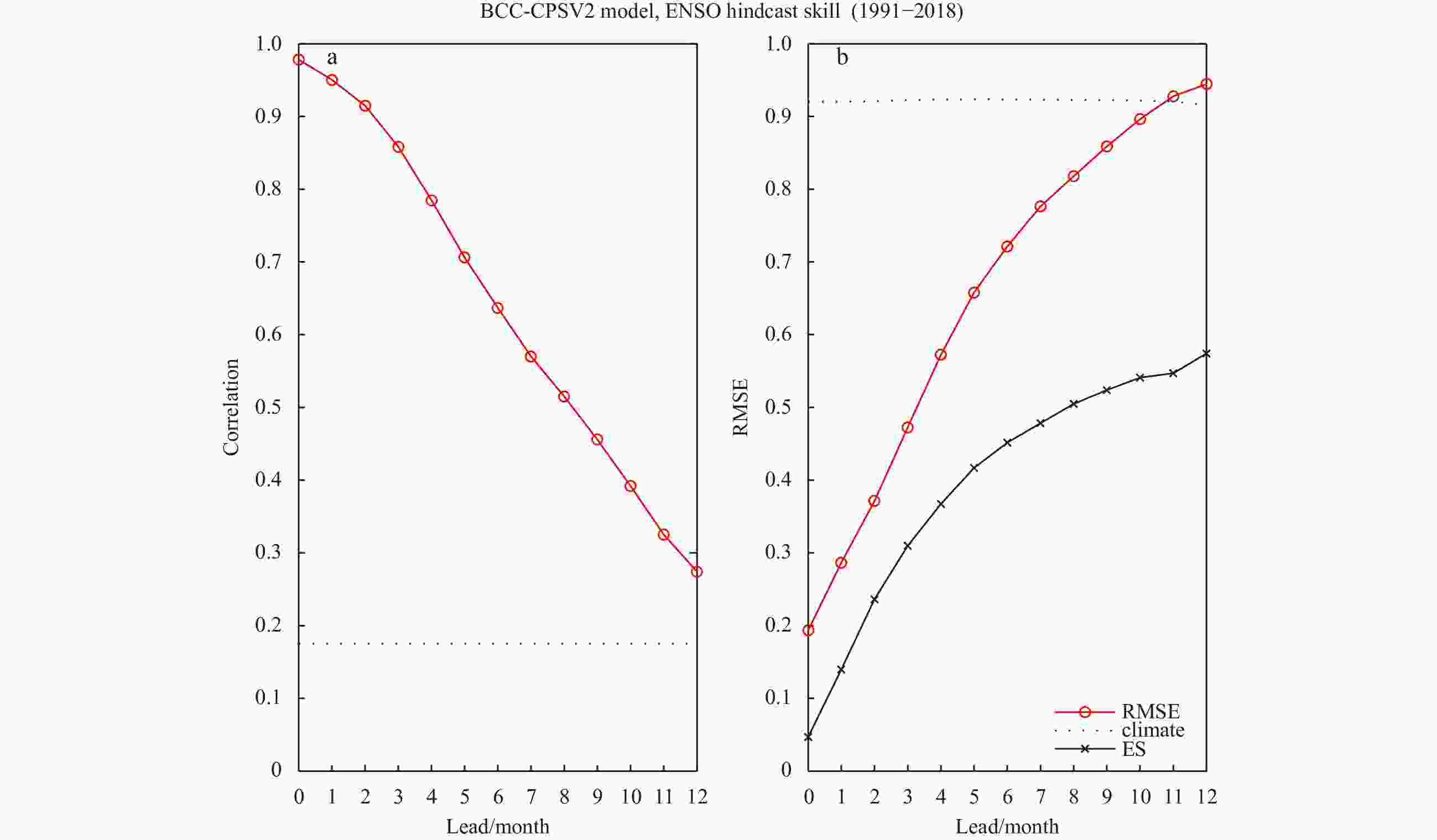
 下载:
下载:
